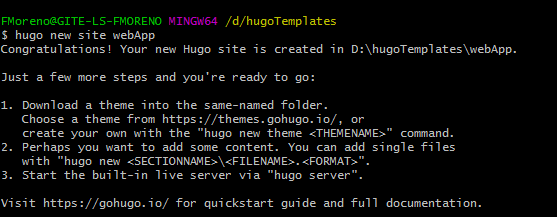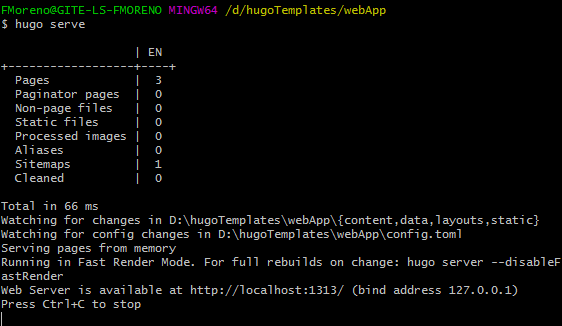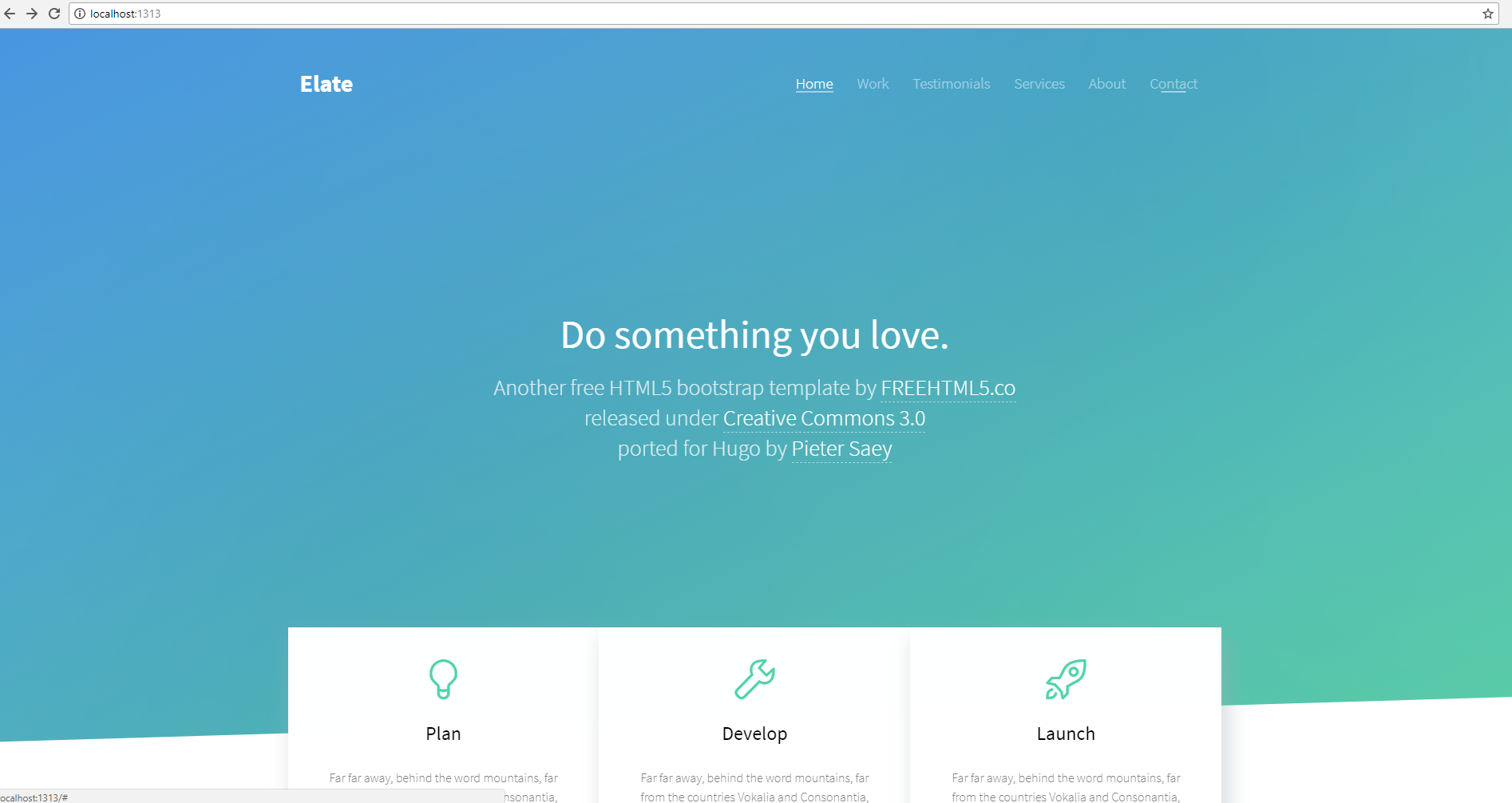Here you’ll learn how to setup your Hugo serve, is very useful if you work with static pages.
Hugo
Is a simple blog, static site generator for personal projects.
Hugo is written in Golang.
See more info here.
Installing
For installing Hugo, we just need install some dependencies:
Golang: Programming language, view my installation tutorial here.
Hugo:
go get -v github.com/gohugoio/hugo
Creating a static web
If hugo exe doesnt generate, go to
$GOPATH/src/github.com/gohugoio/hugoand run:go build -o hugo main.goThen, mv hugo binary to
go/binsrc.
Creating a new project on your local machine:
hugo new site webApp

Note: by default hugo doesnt have theme, in other words, when you run hugo serve, it shows a blank page.
So, we need to install a theme to test hugo serve.
Themes
Then, in the theme/ directory, download theme from repository:
cd webApp/themes
git clone https://github.com/saey55/hugo-elate-theme
Next, copy the file themes/hugo-elate-theme/exampleSite/config.toml to the main config.toml in your site.
You can look for more themes here.
Serve
Finally, start the static web by default in port 1313:
hugo serve
or, in a specific port and host (Note: if you use port 80 or 443, use sudo):
sudo hugo serve --port 80 --bind localhost

In your favourite browser, enter to localhost:1313:

